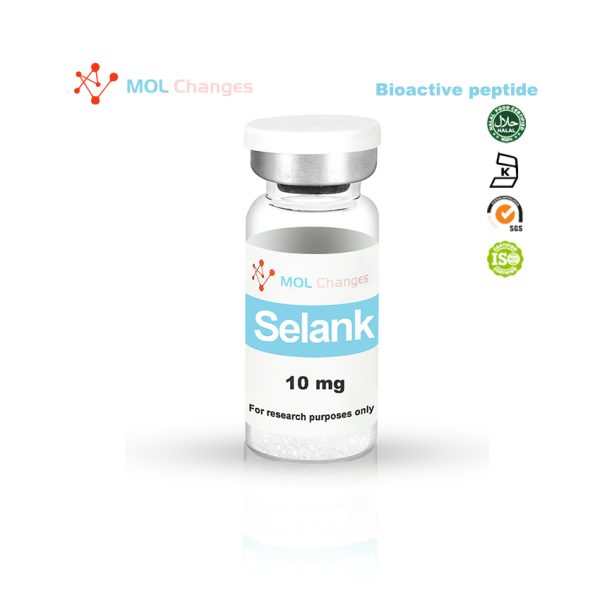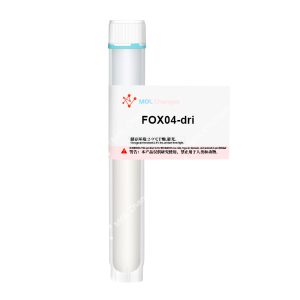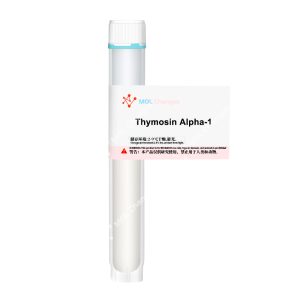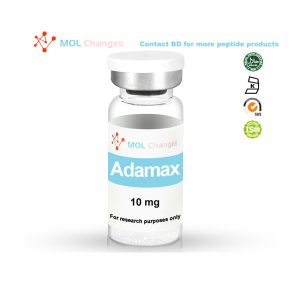Selank is a short peptide developed in Russia with pro-intellectual and anxiolytic properties. It is a synthetic analog of the natural Tuftsin, an immunomodulatory peptide that regulates IL-6, T-helper cells, monoamine neurotransmitters and brain-derived neurotrophic factor (BDNF). In fact, Selank and Tuftsin are essentially the same, except that Selank has four additional amino acids in its chain, which contributes to its metabolic stability and half-life.
Sequence
Thr-Lys-Pro-Arg-Pro-Gly-Pro
CAS Number
129954-34-3
Molecular Formula
C33H57N11O9
Molecular Weight
751.887
Selank Anxiety Effects Based on GABA Neurotransmitter-Related Genes
Dr. Anastasiya Volkova of the Institute of Molecular Genetics in Russia said, “Numerous clinical studies have shown that Selank has strong anxiolytic and neuroprotective effects in the treatment of anxiety disorders.The clinical effects of Selank are similar to those of classical anxiolytic drugs such as benzodiazepines, which are variant modulators of the GABAA receptor that potentiate the inhibitory effects of GABAA.” Selank’s effects include reducing anxiety, improving mood, lowering stress levels, and positively affecting memory and learning. Like benzodiazepines, low doses of Selank have a sedative effect. Unlike benzodiazepines, Selank does not appear to be habit-forming and does not cause withdrawal or amnesia symptoms.
Studies in rats have shown that of the 84 genes known to be involved in some way with GABA signaling, 7 genes are strongly regulated by Selank, while 45 genes show some change in expression after peptide administration. Overall, 52 genes associated with GABA signaling were affected by Selank to some extent. These results suggest that Selank can directly affect gene expression in neuronal cells and that it likely exerts its effects by altering the affinity of GABA receptors for GABA. This alteration in receptor affinity may explain why Selank acts synergistically with benzodiazepines and other GABA receptor agonists.
Studies in rats have shown that Selank and benzodiazepines, when used alone, have similar effects on anxiety, particularly generalized anxiety disorder. Selank may have a slight advantage over benzodiazepines when trying to reduce anxiety levels, but the combination of the two treatments seems to be the best way to treat unpredictable chronic mild stress.
Selank’s effect on GABA receptors may be modulated in part by the peptide’s effect on enkephalin degradation. Tests have shown that people with anxiety disorders and phobias exhibit increased enkephalinase activity in the blood during generalized anxiety, and as a result, they produce enkephalins with a shorter half-life. By inhibiting enkephalinase to prevent enkephalin degradation, Selank may reset this enzymatic pathway and help protect the body’s natural anxiolytic peptides. Studies in anxiety-prone mice support the hypothesis that the effects of Selank are at least partially due to the prevention of enkephalin degradation.
Selank and the Immune System in Anxiety
Studies in depressed patients have shown that Selank suppresses the gene responsible for the production of the inflammatory cytokine IL-6. Interestingly, this effect is only seen in depressed patients and does not seem to occur in healthy individuals. This suggests that Selank may be useful in treating individuals suffering from Anxiety Weakness Disorder, a serious condition in which anxiety is associated with fatigue, headaches, palpitations, hypertension, neuralgia, and depression.
When comparing Selank to standard anxiolytic treatments, such as benzodiazepines, the two treatments showed similar benefits in reducing anxiety, but only Selank had an effect on symptoms of weakness such as fatigue and pain. Part of the effect may be due to Selank’s ability to regulate IL-6 expression, and part may be due to the peptide’s ability to alter the rate of breakdown of the natural painkiller enkephalins in the body.
Selank testing in rats has shown that the peptide regulates the expression of about 34 genes involved in the inflammatory process. These genes affect receptors for chemokines, cytokines and both. In particular, Selank was found to alter the expression of Bcl6, a gene closely linked to the development of the immune system. This study, more than any other, reveals that Selank has very complex biological effects, but may help deepen our understanding of how the immune system develops.
Selank and even Selank fragments have been shown to transiently alter gene expression of C3, CAsp1, Il2rf and Xcr1 in the mouse spleen. By affecting these genes, Selank is able to alter the balance of the immune system and thus regulate inflammation.
Selank Memory and Learning Research
There has long been a correlation between anxiety and learning/memory. This correlation is negative, with increased anxiety leading to a decreased ability to recall memories or store new information. Traditional anxiety treatments can reduce this effect, as can Selank, but Selank appears to do more than just reduce the effects of anxiety on cognitive functioning. There is good reason to believe that Selank actually improves cognitive performance directly.
Studies in which rats were trained with food rewards and injected with either saline or Selank have shown that Selank improves the stability of memory traces and thus enhances memory storage processes. Notably, this benefit was visible regardless of the rats’ anxiety levels, suggesting that the peptide’s effects go beyond its ability to simply reduce stress-related memory deficits.
It appears that Selank may alter memory by affecting the expression of many genes in the hippocampus. Studies in rats showed changes in mRNA levels of 36 different genes following intranasal administration of Selank. Most of the genes encode proteins associated with the plasma membrane and may therefore regulate ion-dependent processes in learning and memory. While a great deal of research is needed to understand the mechanisms by which Selank improves memory and learning, this study provides a tantalizing early clue that it changes the way neurons function, making both forming and accessing memories easier.
The study even suggests that Selank could help salvage memory and learning abilities after brain damage. In at least one study, rats treated with neurotoxin and Selank showed a recovery of cognitive processes. This effect appears to be related to Selank’s artificial inhibition of the catecholamine system in the brain. Selank is expected to help elucidate how cognitive function can be restored or at least improved after traumatic brain injuries, especially those that occur during labor and delivery.
Selank Research and Pain
Selank may reduce the degradation of natural enkephalins by inhibiting the enzyme that breaks down natural enkephalins in human blood. Enkephalins are natural peptides that bind to opioid receptors and help reduce the severity of pain. They also play a role in the human stress response and are found in high levels in the brain and adrenal glands. By lowering the level of enkephalins in the brain, Selank may help attenuate the normal stress response and its effects on memory, learning, and attention.
COA
HPLC
MS
- A. Volkova et al., “Selank Administration Affects the Expression of Some Genes Involved in GABAergic Neurotransmission,” Front. Pharmacol., vol. 7, Feb. 2016. [PubMed]
- A. Kasian et al., “Peptide Selank Enhances the Effect of Diazepam in Reducing Anxiety in Unpredictable Chronic Mild Stress Conditions in Rats,” Behavioural Neurology, 2017. [Online]. Available: https://www.hindawi.com/journals/bn/2017/5091027/.
- A. A. Zozulya et al., “The inhibitory effect of Selank on enkephalin-degrading enzymes as a possible mechanism of its anxiolytic activity,” Bull. Exp. Biol. Med., vol. 131, no. 4, pp. 315–317, Apr. 2001. [PubMed]
- O. Y. Sokolov, V. K. Meshavkin, N. V. Kost, and A. A. Zozulya, “Effects of Selank on behavioral reactions and activities of plasma enkephalin-degrading enzymes in mice with different phenotypes of emotional and stress reactions,” Bull. Exp. Biol. Med. [PubMed]
- O. N. Uchakina et al., “[Immunomodulatory effects of selank in patients with anxiety-asthenic disorders],” Zh. Nevrol. Psikhiatr. Im. S. S. Korsakova, vol. 108, no. 5, pp. 71–75, 2008. [PubMed]
- A. A. Zozulia et al., “[Efficacy and possible mechanisms of action of a new peptide anxiolytic selank in the therapy of generalized anxiety disorders and neurasthenia],” Zh. Nevrol. Psikhiatr. Im. S. S. Korsakova, vol. 108, no. 4, pp. 38–48, 2008. [PubMed]
- T. Kolomin, M. Shadrina, L. Andreeva, P. Slominsky, S. Limborska, and N. Myasoedov, “Expression of inflammation-related genes in mouse spleen under tuftsin analog Selank,” Regul. Pept., vol. 170, no. 1–3, pp. 18–23, Oct. 2011. [PubMed]
- T. I. Agapova et al., “[Effect of semax on the temporary dynamics of brain-derived neurotrophic factor and nerve growth factor gene expression in the rat hippocampus and frontal cortex],” Mol. Genet. Mikrobiol. Virusol., no. 3, pp. 28–32, 2008. [PubMed]
- T. P. Semenova, I. I. Kozlovskiĭ, N. M. Zakharova, and M. M. Kozlovskaia, “[Experimental optimization of learning and memory processes by selank],” Eksp. Klin. Farmakol., vol. 73, no. 8, pp. 2–5, Aug. 2010. [PubMed]
- T. A. Kolomin et al., “[c],” Zh. Vyssh. Nerv. Deiat. Im. I. P. Pavlova, vol. 63, no. 3, pp. 365–374, Jun. 2013.
- T. P. Semenova, M. M. Kozlovskaya, N. M. Zakharova, I. I. Kozlovskii, and A. V. Zuikov, “Effect of selank on cognitive processes after damage inflicted to the cerebral catecholamine system during early ontogeny,” Bull. Exp. Biol. Med., vol. 144, no. [PubMed]
- N. V. Kost et al., “[Semax and selank inhibit the enkephalin-degrading enzymes from human serum]],” Bioorg. Khim., vol. 27, no. 3, pp. 180–183, Jun. 2001. [Springer]
Article/Literature Citation Notes
The purpose of quoting the scientist and professor's article is to acknowledge, recognise and applaud the exhaustive development work that has been done to undertake this peptide research. The scientist does not in any way support or advocate the purchase, sale or use of this product for any reason, and MOL Changes has no affiliation or relationship, implied or otherwise, with the scientist.
warning
These products are intended for scientific purposes only for in vitro research and are not to be used for human, animal or unethical experiments, in vitro research (Latin: in glass) is conducted in vitro. These products are not drugs and are not approved by the Food and Drug Administration in any country for the prevention, treatment or cure of any medical condition, disease or illness. The introduction of this product into humans or animals in any form is strictly prohibited by law.






